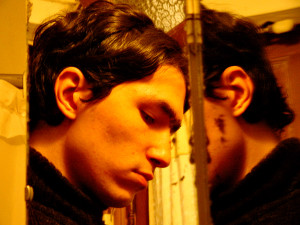By Amber E. Box
 There is nothing more frustrating to a writer than the infamous rejection (except maybe writer’s block…or running out of coffee). Here are some of the most common reasons that editors reject manuscripts and query letters, and how you can avoid them.
There is nothing more frustrating to a writer than the infamous rejection (except maybe writer’s block…or running out of coffee). Here are some of the most common reasons that editors reject manuscripts and query letters, and how you can avoid them.
1. Not following submission guidelines:
One of the most common reasons for having your manuscript rejected by publishers is by simply not following their guidelines. Often, a publishing house will post a summary of what it expects in a submission on its website (i.e. sending a full manuscript vs. a summary only, currently accepting Young Adult only).
According to Midge Raymond, editor at Ashland Creek Press, “In most cases, if authors spent time exploring our website and reading our guidelines, these issues (rejection) could be avoided altogether — so I always encourage writers to first and foremost read all guidelines carefully, perhaps even twice!”
By not reading the submission guidelines thoroughly – and adhering to them, you are telling editors that what you want to submit is more important than what the publisher is interested in reviewing for potential publication – in other words, your own desires are greater than the needs of the publisher. Is it any wonder your work was rejected?
2. Unprofessional query letters
Query letters are an editor’s first impression of a writer. Sending in an unprofessional query letter is like showing up to a job interview in a wrinkled shirt and cutoff shorts. It’s simply not going to get you the job. If you cannot show a highly polished, well-written letter to introduce yourself and your manuscript, an editor has no choice but to assume that the rest of your work will reflect this as well. This also includes incomplete query letters.
Raymond says “Be professional and realize that you have to make a very good first impression if you hope to find an editor or agent who wants to build a long-lasting relationship with you.”
3. Not having a platform
Most writers assume that if they are published by a traditional publisher then they are off the hook for marketing their book. This is not entirely true. While big publishers have more leverage to sell and market your book, the truth is that most (if not all, to some degree or another) will want to work with someone who shows they can do some leg work on their own.
Editor Linda Carlson suggests you have an established following such as, “a popular blog, Twitter feed, Pinterest pages or Facebook page (and preferably all of these) in place, with thousands of followers/likes” before ever submitting your manuscript in for review. Doing so shows that you are not only passionate about your writing, but that you are also serious about it, making an editor or agent more inclined to sign you.
One way to build a platform is to take advantage of social media to create an online presence. Just remember: keep it professional!
4. Incorrectly formatting your manuscript
While you may have creative freedom on what goes in your novel, the way you format it is best left to the professionals. “Manuscripts should be submitted as manuscripts, not in what the writer perceives to be book text design,” says Carlson. “You’re a writer, not a book designer. Big difference.”
Aside from a few variations (or as noted in submission guidelines- which brings us back to the first reason why writers receive rejections, as seen above), manuscripts should typically be presented in a professional font (i.e. Times New Roman) with one-inch margins on 8 ½ x 11 inch white paper.
Most publishers and/or agents will give you specific guidelines on headers, page numbers, title pages, etc. If they do not, then it is assumed that standard formatting applies.
By avoiding these common pitfalls, you can help reduce the odds that your submission will be thrown out with yesterday’s coffee, and instead, given the consideration it deserves.
Amber Box ’15, ’17G is a writer, editor, president of a community-based nonprofit organization and an adjunct professor. She earned her B.A. in English Language and Literature and her M.A. in Creative Writing and English at Southern New Hampshire University.
Category: